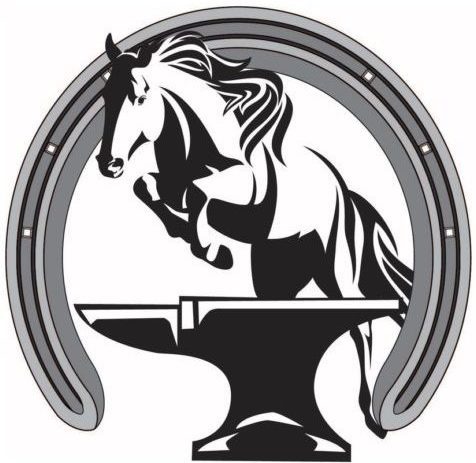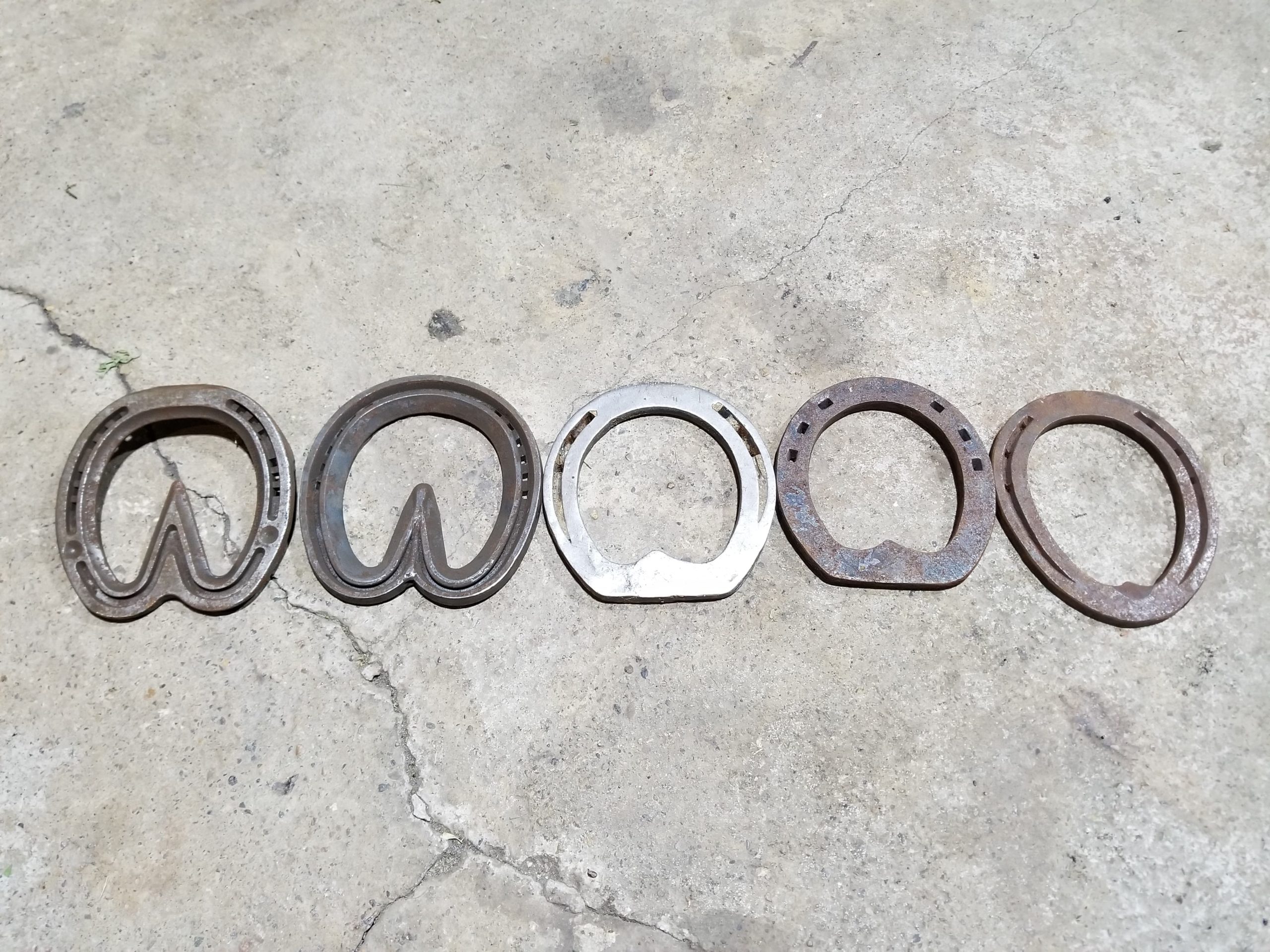In our last post we talked about three main classifications of shoes by looking at open heeled shoes. This month we are looking at the purpose of bar shoes and some of the variations we use. First, any of the barshoes can be made in the same fashion as the open heeled shoes we talked about last time, plain stamp, fullered or concave. In general, barshoes are used to 1) change how the foot loads, 2) stabilize the foot, and 3) alter foot position in relation to the body. Due to the nature of the barshoes and the effect they have on feet, a great amount of skill is required to apply them correctly.
Straight bar
The straight bar is one of the most common barshoes used. It is a good option for stabilizing the hoof capsule, protecting the heels, and will shift the load placed upon the foot to some degree. Stabilizing the foot, not allowing the sole to drop quite as far, can be beneficial in certain cases where you have a weak foot that is moving too much each time it loads. By using this shoe we can also unload a portion of the wall, such as a heel, and transfer some of that weight to the frog, though not quite as well as with a heartbar. There is some effect of “floating” or “wedging“ the foot due to the ground force reaction as the shoe encounters a deformable surface as well. We will discuss ground force reaction (gfr) more fully in a later blog post.
Eggbar
The egg bar will provide the same stabilizing effect as the straight bar but has a more significant influence upon foot loading and foot position relative to the body. The eggbar may be used when we want a more significant “wedge“ effect than with the straight bar. This shoe will also influence the horse to place the foot more palmar/plantar in relation to the rest of the body.
Heartbar
The heartbar stabilizes the hoof capsule but also transfers some of the load from the hoof wall to the frog. It will also provide a significant amount of protection for the foot. While the traditional use of a heartbar was for a laminitic horse, if used correctly the frog plate can provide a significant amount of protection from the terrain.
Rest shoes
In this category we typically think of the fishtail bar shoe and the patten bar. Both of these significantly affect the loading and placement of the foot in relation to the body. This category of shoes are typically used in a surgical environment such as during a significant injury or possibly during recovery from some surgeries. Due to the radical nature of these shoes they should only be used in conjunction with a veterinarian.

